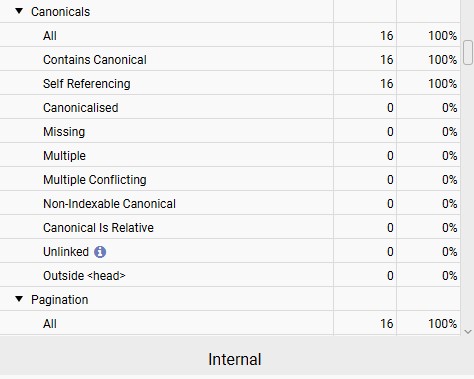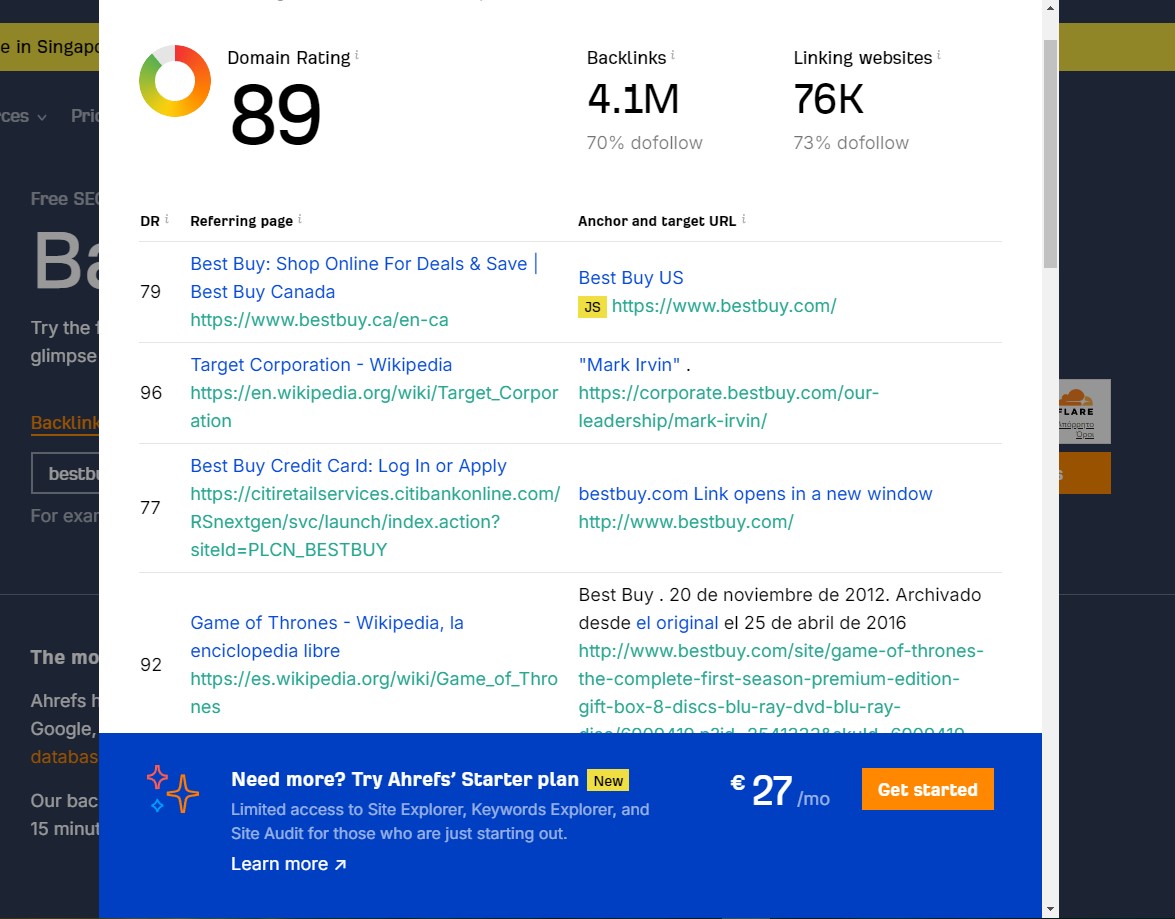
Are you finding it challenging to attract visitors to your online shop, even though you offer amazing products? A well-crafted ECommerce SEO checklist could be the solution you’re looking for.
If you’re an eCommerce store owner looking to boost your website’s visibility, you’re not alone. In the competitive world of online shopping, simply having great products isn’t enough.
Without proper SEO optimization, your potential customers might never find you.
But don’t worry, this comprehensive ECommerce SEO checklist will help you optimize your online shop and attract the traffic you deserve.
Basics of an SEO Checklist
Firstly, optimizing your website for search engines is crucial when setting up your eshop.
While it may not seem essential at first, doing so helps organize your website and ensures everything is in place before launch, making later optimizations much easier.
Let’s dive into a fundamental eCommerce SEO checklist to get your website ready right from the start.
Google Search console
One of the key steps in eCommerce SEO is to ensure that your website is properly indexed by Google.
You can achieve that by verifying your website via Google Search Console.
Monitor indexing status regularly to ensure all pages are being indexed:

You can also look at useful metrics such as your average position in search engine results. It’s also possible to review other key metrics such as impressions per page to understand your shops performance.

Utilize Google Search Console to monitor indexing status, resolve crawl errors, and submit XML sitemaps for better visibility.
Server Files
Previously, I mentioned XML sitemaps. These are part of your server files that help search engine crawlers, like google’s bots, find and understand your pages, including important information about them.
You can easily generate one in any XML sitemap generator, which you can then submit in google search console for better visibility.
The second server file is robots.txt. You can use robots.txt to disallow search engine crawlers from crawling specific parts of your eCommerce shop.
For example, you can disallow pages such as “add to cart” so google and other search engines don’t crawl and index such pages.
Here is how Amazons robots.txt file is:

As you can see, amazon disallows crawlers from entering and indexing pages such as e-mail-friend and cart.
Ensure that your server files are correctly configured to properly guide search engine crawlers.
Google Analytics
Moving on with the eCommerce SEO checklist, you can leverage Google Analytics to gain insights into user behavior, traffic sources, and conversion trends.

Google Analytics is a must-have tool for every online shop. It allows you to add trackers (cookies) that collect data on your customers journey through your online shop.
For example, you can see which pages they visit the most, how long they stay, and where they drop off.
By using this information, you can make informed decisions to improve the user experience (UX) of your eCommerce shop, making it easier and more enjoyable for customers to navigate.
This can also help increase the time they spend on your website and boost sales.
On-Page SEO Checklist + Bonus Tip
In this chapter, I will cover the basics of an On-Page SEO checklist to help you optimize your websites content for both search engines and your consumers.
Keyword Research
Thorough keyword research is pivotal for eCommerce SEO.
For what reason?
Identifying high-converting low competition keywords that align with your users intent and needs can significantly boost conversions and sales.
Effective keyword research not only drives traffic but also ensures that the visitors are more likely to make a purchase.
Consider this:
Ranking for broad keywords like “shoes” is challenging because top brands dominate these terms.
Additionally, such generic keywords might attract a broad audience that isn’t necessarily looking to buy.
Instead, focus on long-tail keywords—variations of your target keywords that are more specific and indicate a higher intent to purchase.
For instance, instead of “shoes” try “mens basketball shoes” or “best jogging shoes for women.”
These specific terms not only have lower competition but also attract users who are further along in the buying process and more likely to convert.
By targeting these low-competition variations, you can achieve higher rankings in organic search results, drive targeted traffic, and ultimately increase your sales and customer base.
Search Intent
As highlighted earlier, leveraging long-tail keywords that align with your users intent and needs is essential.
But what exactly is search intent?
User intent refers to the goal of the user’s query.
To be more specific, consider these key types of user intent:
- Informational Intent: This occurs when users are seeking information or answers to their questions. It’s good to target such intent in places like your blog.
For example, a query like “how to bake a chocolate cake” indicates that the user is looking for instructional content. In this case, a blog post or guide on “how to bake a chocolate cake” would meet their needs and provide valuable content. - Transactional Intent: This type of intent is when users are looking to make a purchase or take a specific action. You can target this search intent through your SEM (PPC) campaigns.
For instance, a search for “mens running shoes” signifies that the user is in the market to buy and is likely looking for product options. A product page or a category listing for “mens running shoes” would be more appropriate for this search.
Understanding user intent is crucial for several reasons, such as improving the overall UX, increasing conversion rates, and enhancing the relevance of your content.
Meta Tags
For the next step, consider making compelling meta titles and descriptions that entice users to click through to your eCommerce website.
Crafting an intriguing title can help contribute to a better click-through rate.
While including your main keyword is a must, you can also add stuff like the current year or numbers to make it more appealing as well.
Here are some examples straight from google search results:

For your description tag, when the target keyword is included google often highlights it in bold when a users query matches the keyword. This can make your listing stand out more in the search results, drawing the user’s attention.
Though including keywords in your description tag does not help you rank for them.

Utilize meta tags for improved click-through rate and to enhance user engagement by providing clear, relevant information about your page’s content.
SEO Friendly URLs
Next on the eCommerce SEO checklist are SEO-friendly URLs.
Why are they important?
First, they help search engines understand the content of your pages more effectively.
Second, they aid in organizing and categorizing your website’s structure.
For example, a URL like “Amazon.com/blog” clearly categorizes content under blog posts, making it easier for search engines to identify and index.
Ensure your URLs are user-friendly and include relevant keywords.
Avoid excessive length and special characters like uppercase letters and hyphens.
Schema Markup
Schema markup offers various ways to improve the user interface and experience of your eCommerce shop.
Let’s start with:
1. Breadcrumbs.
Using breadcrumbs helps create a clear and intuitive navigation path for users, making it easier for them to understand their location within your site.
It can also help them backtrack easier by just clicking the previous step:

2. Enhanced Search Results.
Schema markup can also be used to display key information such as product images, prices, ratings, and availability directly in search results.
This makes your listings more attractive and informative, potentially increasing click-through rates.

Implementing schema markup can significantly enhance both the user interface and user experience of your eCommerce shop.
Bonus Tip – ECommerce Blog
One of the most important parts of an eCommerce SEO checklist that is usually overlooked is an eCommerce blog.
Maintaining an active eCommerce blog is a vital strategy for enhancing your online presence and driving success.
By publishing engaging, keyword-optimized content, you address customer pain points and showcase your products or services in a meaningful way.
This approach not only provides valuable information to your audience but also helps in establishing your brand as an authority in your industry.
Regularly updated blog content serves multiple purposes:
Firstly, it attracts organic traffic by targeting relevant keywords and answering common questions or concerns that potential customers may have.
Each blog post acts as an opportunity to rank for new search terms, drawing more visitors to your site and increasing your chances of converting them into customers.
Take shopify’s blog for example:

It consistently publishes informative and engaging content that not only showcases their products but also provides valuable insights and solutions for eCommerce businesses.
Moreover, a well-maintained blog helps improve your website’s authority.
Search engines recognize frequently updated, high-quality content as an indicator of a trustworthy and relevant site.
This can lead to higher rankings in search results, further boosting your visibility and driving more traffic.
Additionally, an eCommerce blog allows you to engage with your audience on a deeper level.
By sharing tips, industry news, and product insights, you foster a connection with your customers, building trust and encouraging repeat visits.
An active eCommerce blog supports your overall SEO strategy, drives more qualified leads, and helps establish your brand as a go-to resource in your niche.
Technical SEO Checklist
Moving on with the eCommerce SEO checklist, next in line are the technical aspects of your website.
It’s crucial to optimize your website so that search engines can find and index pages as quickly as possible.
Furthermore, it’s equally important to enhance your eCommerce shop technically to improve your customers UX while they are browsing your online shop.
ECommerce Website Structure
First things first, focus on properly structuring your eCommerce website and correctly categorizing your products.
A well-structured site facilitates a smooth user experience and efficient crawling for search engines.
A good example is Amazon’s website.
Amazon uses a hierarchical structure with clear categories and subcategories, making it easy for users to find products.
For instance, within the “Electronics” category, you can find subcategories like “Computers & Accessories” and “Television & Video,” allowing users to navigate quickly to the desired section:

This type of organization not only helps users but also aids search engines in understanding and indexing the site effectively.
Indexing and Duplicate pages
Monitoring and managing website indexing is essential to prevent non-relevant pages or duplicate content from being indexed.
Proper indexing ensures that only the most valuable and relevant pages appear in search engine results, improving your site’s visibility and performance.
When it comes to the indexing of your eCommerce website, it is completely normal to have duplicates because of product pages:

You can use SEO tools like Screaming Frog to help you with finding such pages:

Afterwards, use canonical tags, tags used to identify the preferred version of a page, in order to make it obvious to search engines which version they should show in search results.
Mobile Friendliness
Mobile Friendliness is extremely important since most people use their mobile devices to navigate the internet nowadays.
There are numerous studies to support this trend:

(Source Semrush)
Google has also announced that it will stop indexing websites that aren’t accessible on mobile:

It’s vital to have a good mobile structure, UI and appearance for mobile users in order to secure more sales.
Ensuring that your eCommerce shop is mobile-friendly makes it easier for users to navigate your site on their mobile phones, leading to more satisfied customers and potentially more conversions.
Some examples of optimizing your eCommerce website for mobile is implementing a responsive design, ensuring fast load times, and simplifying navigation via the breadcrumbs menu.
Page Speed and Core Web Vitals
Page speed is a huge factor in SEO and should be prioritized as mentioned above.
Think of the last time you visited an eshop.
Did the loading speed of the page you were visiting affect your experience?
If so, imagine how it affects your customers.
To evaluate your page speed, you can use tools like pagespeed insights by google:

This tool provides detailed statistics about your page’s speed and offers suggestions on how to improve it.
The three main things you need to address are the Core Web Vitals:
- FCP (First Contentful Paint): It’s the time it takes for the first content piece to appear on screen.
- CLS (Cumulative Layout Shift): Measures visual stability by tracking unexpected layout shifts during page load.
- LCP (Largest Contentful Paint): The time it takes for the largest content element on the page to become visible.
By optimizing these metrics, along with other aspects such as image compression, you can achieve faster page load speeds, which will be beneficial for your business.
Fix Broken Links
Last but not least, broken links can not only impact the user experience negatively but also the crawling of your pages.
Ensure you have no broken links on your website from one product to another to avoid confusing your customers.
A tool you can use to find such links is check my links:

This tool shows you all the broken internal and external links on your pages, which can be extremely helpful in streamlining the process of identifying and fixing these links.
By regularly monitoring and fixing broken links, you can maintain a seamless user experience and ensure efficient crawling and indexing by search engines, ultimately improving your site’s SEO performance.
Off-Page SEO Checklist
Moving on to the last part of the eCommerce SEO checklist, I’ll cover how improving your Off-Page SEO strategies can have an impact in your eCommerce business.
This involves optimizing your local SEO as well as refining your link-building strategies.
Let’s especially look at how backlinks help more in depth…
Backlink Analysis
Conducting a comprehensive backlink analysis is essential for evaluating the quality and quantity of backlinks pointing to your eCommerce site.
By analyzing your backlinks, you can identify high-quality links that boost your site’s authority and visibility, helping to improve your search engine rankings.
A tool you can use for such an occasion is ahfers backlink checker:

You can also enter your competitors domains, which highlights opportunities for link building, allowing you to focus on acquiring more valuable links from reputable sources.
And speaking about opportunities for link building, how do you expand your link portofolio?
There are many ways you can find backlink opportunities, such as…
Backlink Opportunities
Guest blogging, influencer collaborations, and engaging with industry-related publications.
All of these are ways you can get backlinks back to your eCommerce website.
Guest blogging on reputable sites allows you to share your expertise while gaining valuable backlinks to your eCommerce site.
Collaborating with influencers can also provide high-quality links, as their endorsements often carry significant weight with both audiences and search engines.
Engaging with industry-related publications helps in acquiring authoritative backlinks that boost your site’s credibility. Though it may be costly.
Additionally, linking products within your eCommerce shop can improve your site’s internal linking structure, making it easier for search engines to crawl and index your pages.
That is what most eCommerce shops do like amazon:

This practice not only enhance your SEO but also improves user experience by helping customers discover related products, potentially increasing sales and customer satisfaction.
Local SEO Optimization
Now if you are a business targeting local markets, you can optimize your eCommerce site for local search by creating Google My Business profiles, obtaining local citations, and gathering positive customer reviews.
Those are practises of Local SEO.
And how do those practises help you ask?
- Google My Business: By creating and maintaining a Google my Business profile, you can appear in local search results and on Google Maps, increasing your chances of attracting local customers.
- Local Citations: Obtaining local citations from reputable directories and websites further enhances your local search visibility and credibility.
- Customer Reviews: Positive customer reviews not only build trust with potential customers but also improve your rankings in local search results.
Wrapping up…
Implementing this ECommerce SEO Checklist for 2024 can significantly elevate the visibility and performance of your eCommerce site.
By focusing on technical, on-page, and off-page SEO strategies, you can enhance your site’s rankings and drive more conversions.
If you want to read more posts about how to improve your website’s SEO, feel free to take a look at the rest of my blog!
